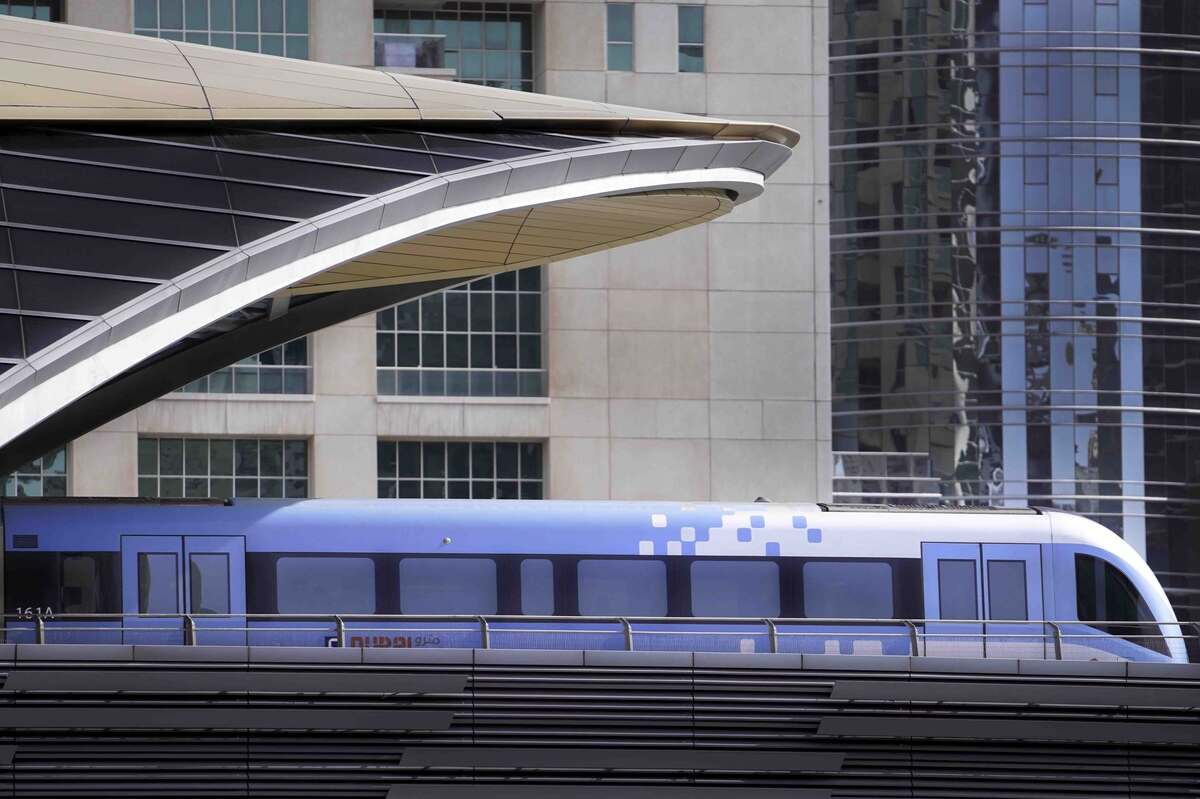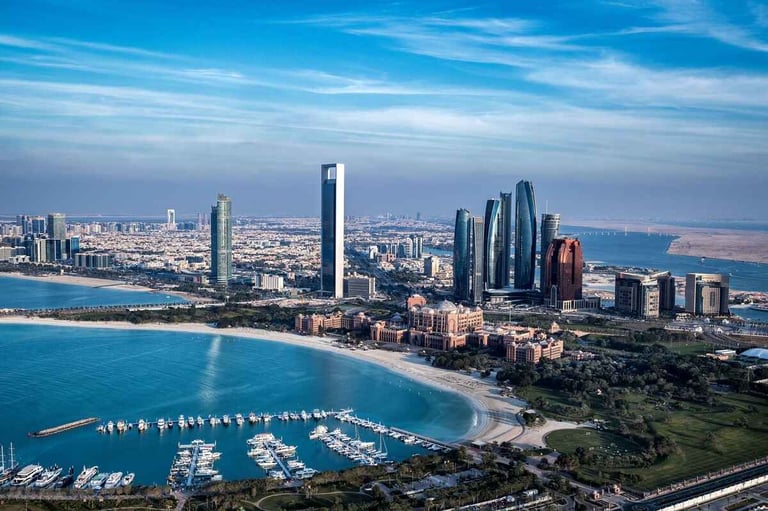Dubai’s Roads and Transport Authority (RTA) has revealed that public transport and shared mobility services in Dubai catered to 747.1 million riders in 2024, marking a 6.4 percent increase from the 702 million riders recorded in 2023. The transit services encompassed Dubai Metro, Dubai Tram, public buses, marine transport (abras, ferries, and water taxis), shared mobility (smart app-based ride-hailing, hourly rentals, and bus-on-demand), as well as taxis (Dubai Taxi and franchise companies). The average daily ridership exceeded 2 million, up from 1.92 million in 2023. Additionally, luxury transport services (limousines) welcomed 19 million users.
Total trips and monthly highlights
The total trips across public transport, shared mobility, and taxis reached 153 million in 2024. Taxis made up over 115 million trips, while shared mobility services accounted for approximately 32 million trips.
The months of October and November recorded the highest trip volumes, each reaching 14.1 million trips. November 2024 also experienced the highest ridership, with nearly 69.9 million riders, followed by October with 68.4 million and December with around 68 million. Ridership for the remaining months fluctuated between 54 million and 65 million.

His Excellency Mattar Al Tayer, director general and chairman of the Board of Executive Directors of Dubai’s Roads and Transport Authority (RTA), expressed his satisfaction with the consistent annual growth in Dubai’s public transport ridership and the 28 percent increase in shared mobility users compared to 2023. He noted that these achievements are a testament to substantial investments and dedicated efforts to enhance Dubai’s public transport infrastructure.
Infrastructure developments
Al Tayer highlighted the Dubai Metro, which spans nearly 90 kilometers, and the Dubai Tram, covering approximately 11 kilometers. He also pointed out the expansion of the bus network from 2,095 kilometers in 2006 to 3,974 kilometers in 2024 (both directions), supported by a modern fleet of around 1,400 buses that comply with European low-emission standards (Euro 6). Furthermore, Dubai has developed a comprehensive marine transport system, integrating traditional abras, Dubai Ferry, and water taxis.

Service expansion plans
Al Tayer reaffirmed RTA’s commitment to sustaining the growth and development of Dubai’s public transport network, ensuring it remains the preferred mobility choice for both residents and visitors.
In December, RTA awarded the contract for the Dubai Metro Blue Line project to a consortium of three Turkish and Chinese companies, at a total cost of AED20.5 billion, with construction set to commence in April.
The new 30-kilometer line will feature 15.5 kilometers underground and 14.5 kilometers above ground, connecting 14 stations, including three interchange stations. It is designed to serve key urban areas expected to accommodate nearly one million residents under the Dubai 2040 Urban Plan and will seamlessly integrate with the Red and Green Lines of Dubai Metro.

Additionally, the Blue Line will provide a direct connection between Dubai International Airport and nine locations along the route, with travel times ranging from 10 to 25 minutes.
His Excellency Al Tayer added: “As part of efforts to enhance the role of Dubai’s public transport in facilitating mobility for residents and visitors in Dubai, RTA plans to expand dedicated bus and taxi lanes in 2025 and 2026. This expansion includes the implementation of six new lanes spanning 13 kilometers, increasing the total length of dedicated lanes to 20 kilometers. These lanes are expected to boost ridership by 10 percent, improve bus arrival times by 42 percent, and reduce bus travel times by 41 percent.”
“RTA is also studying the implementation of a trackless tram system at eight locations across Dubai. This advanced, self-driving, eco-friendly system operates on electric power and follows a virtual track, guided by camera-based lane tracking technology instead of traditional rails. The system offers lower costs and faster implementation compared to conventional tram projects. It has a maximum speed of 70 km/h, an operational speed ranging from 25 to 60 km/h, and can travel 100 kilometers on a single charge.”
“Additionally, RTA is exploring the pilot operation of self-driving buses equipped with advanced artificial intelligence technologies to ensure the highest safety standards. These autonomous buses, which can travel at speeds of up to 40 km/h, are designed for short-distance trips and have a capacity of 10 to 20 riders.”

Ridership distribution
Al Tayer stated that Dubai Metro, the backbone of the city’s public transport network, accounted for the largest share of ridership in 2024, at 37 percent. Taxis held 27 percent, down from over 28 percent in 2023, indicating a positive shift towards public transport adoption. Public buses represented 25 percent of total ridership, up from 24.7 percent in 2023. Shared mobility services experienced growth, increasing from 6 percent in 2023 to 7.5 percent in 2024. Meanwhile, marine transport and Dubai Tram maintained their shares, with marine transport at 2.5 percent and Dubai Tram at 1 percent.

Dubai Metro performance
Dubai Metro’s Red and Green Lines recorded 275.4 million riders in 2024, reflecting a 6 percent increase compared to 2023. BurJuman and Union stations, which serve both the Red and Green Lines, accounted for the highest ridership last year, with BurJuman station handling 16.2 million riders and Union station recording 12.9 million riders.
On the Red Line, Al Rigga station registered the highest ridership with 13 million riders, followed by the Mall of the Emirates station with approximately 11.2 million riders, and the Burj Khalifa/Dubai Mall station with around 10.6 million riders.
On the Green Line, Sharaf DG station recorded the highest ridership with 9.9 million riders, followed by Baniyas station with 8.4 million riders, and Stadium station ranked third with 6.8 million riders.
Public transport user statistics
In 2024, Dubai’s public buses transported 187.7 million riders, an 8 percent increase from 2023, while marine transport (abras, water taxis, and Dubai Ferry) ferried 18 million riders, reflecting a 3 percent rise. Dubai Tram carried 9.4 million riders, marking a 6 percent increase.
Shared mobility services, comprising smart app-based ride-hailing, hourly rentals, and bus-on-demand, saw a 28 percent surge, transporting 56 million riders. Taxis (Dubai Taxi and franchise companies) remained a key mode of transport, carrying 200.6 million riders, a 1 percent increase from 2023. Additionally, luxury transport services (limousines) recorded 19 million riders in 2024.








